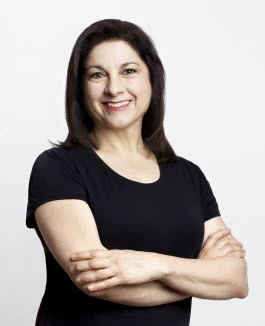Sankalpa: The Yoga of Making Healthy Choices

Did you welcome the New Year with a resolution or two? You are in good company! According to The Journal of Clinical Psychology, 62% of Americans either usually or sometimes make resolutions. (1)
The numbers on the other end are not quite as optimistic. By the same report, 92% won’t bring their resolution to fruition. In fact, by the time you read this about 30% of the resolution makers will already have jumped ship.
Most of us have been there. We aim high, resolving to quit smoking, to pay down our bills, or the perennial top pick, to lose weight. We set a date by which time we resolve to be nicotine-free, out of debt, and 20 pounds lighter. With fresh determination, we enlist the help of websites, books, products, gym memberships and diets, and dive in.
Shortly, many of us abandon our new rules and quietly admit defeat. We may tell ourselves the timing is not right or delay the hard stuff for some future date when conditions will be more favorable. We’ve lost confidence, the numbers seem too challenging, our bodies aren’t cooperating. In short, the resolution is a bust.
What’s the problem? Let’s start with the root word, resolute. Sounds so unyielding and stubborn, no? It’s easy to fall short with such exacting terms. And then there are the goals that largely address symptoms, but not their root cause.
Targeting a number on a scale, for example, fails to address what’s driving our eating patterns and current weight. Plus, we humans like homeostasis. Changing habits or behaviors is hard! Despite the will and motivation, most resolutions are by nature unsustainable.
A better way to change an outcome is to go much bigger picture. For this, yoga offers a foolproof proposition:
Sankalpa
A sankalpa is a willed intention. It is a way to address a deep, heartfelt desire, rising above the more mundane resolution and instead steering us toward our life’s purpose. The process is deceptively simple: Using non-judgmental language, we craft a short statement that speaks to our aspirations–let’s call them lofty goals.
Instead of measuring “success” against rigid task-based criteria, we positively affirm the qualities that we wish to cultivate. We affirm the limitless potential within us and tap into our own best and true nature.
In crafting our sankalpa we refrain from describing character flaws: I will stop being overweight, drinking too much, racking up credit card debt. Instead, we joyfully and compassionately elucidate actions we want to nurture in positive terms. And we speak in the present or future, rather than referencing past behaviors. Like this:
I embrace myself with compassion and kindness.
I will strive to recognize and transform unhelpful behavior patterns.
I have everything I need to be happy in this moment.
This is not to say we can’t get more specific. If transforming unhelpful behaviors is the big picture, we can still describe incremental steps with the same nuanced language:
I exercise with joy and appreciation for what my body is capable of doing.
I will nourish myself with fresh, healthy food, recognizing that cravings are temporary and may signal other needs.
My health and happiness are worth the discomfort of not smoking.
Creating Our Sankalpa 
As it’s less about fitting into a contrived structure and more about discovering what’s already within, creating a sankalpa requires a bit of quiet contemplation and deep listening. For this we can use another yogic practice called svadhyaya, which means self-reflection or self-study.
Start by taking a moment–or many moments–over the next few days or weeks, to sit quietly in a spirit of open inquiry. Without judgment or expectation, ask yourself what’s really in your heart.
What’s triggering your current actions? What’s fueling your desire to change? What are the actions that will move your path into closer harmony with your life’s purpose? What words will inspire and remind you?
Once the intention is crafted, think about the ways to reinforce it that will be most effective for you. Frequency is important. This is much more than a simple statement to be declared once or twice and forgotten.
Think of your sankalpa as a potent seed to be fed and cultivated in order to take root and thrive. Where and how you do that depends on what resonates with you.
If you have a meditation practice, your intention can become a mantra to recite or a way to begin or end your practice. A note on the bathroom mirror, or a small, framed card on your desk is another way to keep your sankalpa close. When temptation or cravings threaten to derail your good intentions, repeating it to yourself can bring you back to your intention.
By the way, this doesn’t mean the concept of sankalpa is in conflict with more mundane action steps. For example, the sankalpa to nourish your body with fresh, healthy food may be best served by the practical help of a diet plan, online support group, or help from a nutritionist. It’s a subtle distinction, but actions motivated by a heartfelt, loving intention are less likely to be viewed as either onerous or temporary.
And slip-ups? If your intention is to transform a behavior over time, there is no such thing as failure, only progress along a continuum. Instances of backsliding into old habits become teachers and growth opportunities, not a sign of defeat.
The photo above was taken in Northern Michigan on December 31st. The sun was rising on a new day, the air was crisp and bracing, and a blanket of pure, unmarked snow spread out on the ground outside the back door. Throwing caution overindulging in an obvious cliché to the chilly wind, I set my intention for the year and pictured myself setting out, feet clad in warm boots, ready to carve a path into that fresh canvas.
Happy New Year!
Reprinted with permission from yogalynn.com
More yoga on and off the mat from YogaUOnline and Lynn Crimando – Yoga Off the Mat: A Walking Feast for the Senses.

Lynn Crimando, MA serves as the teaching mentor for YogaUOnline’s Wellness Educator Program. She is a yoga teacher, C-IAYT Yoga Therapist, board-certified Health and Wellness Coach, and a Buteyko Practitioner. She has a private practice in New York City and teaches classes throughout the city on behalf of Health Advocates for Older People. In addition, Lynn is on the faculty of the IAYT-approved Yoga Polarity Therapist Training in Malverne, New York. To learn more about Lynn, visit her website: yogalynn.com.
Resources
1. https://www.statisticbrain.com/new-years-resolution-statistics/



